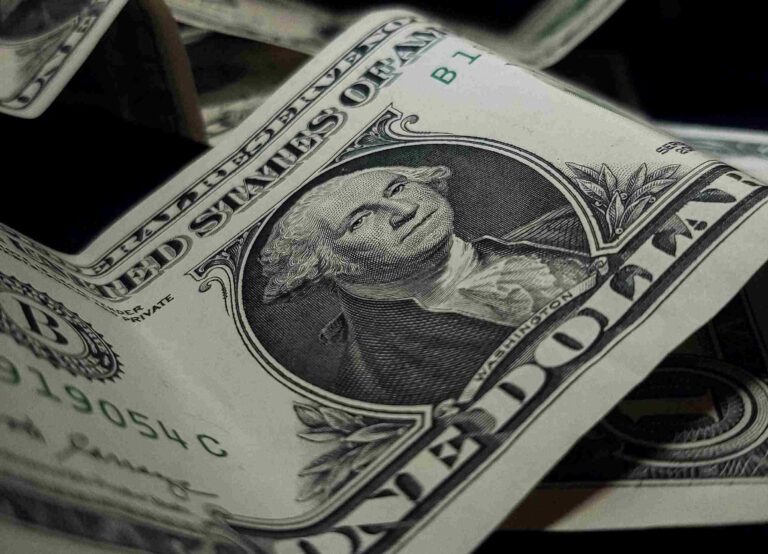Have you ever heard about currency devaluation and wondered how it might affect your finances? Currency devaluation, also called currency depreciation, is the process of reducing a country’s currency value relative to other currencies. Currency devaluation is a hot topic in the world of finance, and it’s one that can have serious economic implications.
It can have far-reaching impacts on a country’s economy and its citizens’ finances. In this article, we will explain what currency devaluation is and look at how governments use it to help their economies, as well as how it can affect your finances.
Table of Contents
Currency devaluation: what is it?
A nation’s currency losing value in comparison to other currencies on the foreign exchange market is referred to as currency devaluation in economic terms.
When a currency is devalued, it refers to a decline in value relative to other currencies. This may occur when a nation’s inflation rate increases or its currency’s demand decreases, which results in less of that currency being bought by investors and other nations.
A straightforward illustration of devaluation would be if the dollar dropped in value relative to the euro: In Europe, a product that costs $100 in the United States would cost €80. (at an exchange rate of 1 euro to 0.8 US dollars). As a result, if you live in the U.S. and want to buy anything from Europe, you will have to pay more; conversely, if you live in Europe and want to buy something from the U.S.
Causes of currency devaluation
Currency devaluation may be caused by a number of circumstances, such as:
- Supply and demand dynamics: when a currency’s supply rises relative to its demand, the value of the currency tends to decline because fewer people are willing to purchase it;
- Political instability: when a nation experiences political unrest, foreign investors and other nations may be reluctant to use that nation’s currency as collateral. The currency devalues as a result of this drop in demand;
- Economic factors: when a nation’s economy is struggling, its currency may devalue because buyers and sellers are less likely to put money into that nation’s money;
- Inflation: when inflation is high, the value of a country’s currency tends to decrease in comparison to other currencies, leading to its devaluation.
Types of currency devaluation
The two primary forms of currency devaluation are:
- Floating Exchange Rate: the most prevalent type of currency devaluation, a floating exchange rate refers to changes in a currency’s value in comparison to other currencies that are determined by the market. This implies that supply and demand determine how much a country’s currency is worth;
- Fixed Exchange Rate: under a fixed exchange rate, a central bank intervenes in the market to maintain the value of a currency at a predetermined level. This kind of devaluation typically takes place when a nation wants to keep its existing economic standing and stability.
How does currency devaluation affect your finances?
The effects of a currency devaluation on a nation’s inhabitants can be extensive. The impact of lowering the currency’s value on your money can be positive or negative, depending on your unique financial situation.
If you are an exporter and you are paid in a devalued currency, your profits will be less when you convert them to another currency. This implies that you might not be able to spend as much of your income as you once could.
But, if you are a visitor visiting a nation that has devalued its currency, you will profit from the cheaper costs of the goods and services available there. This suggests that you might be able to buy more for your money than before.
Advantages of currency devaluation
Currency devaluation is another economic instrument that can be utilised to boost a nation’s economy. The benefits are listed below.
- A country’s exports may become more competitive and may draw international investment if its currency is weaker;
- By raising domestic demand for local goods and services, it can aid in economic stimulation;
- Citizens who have borrowed money in a foreign currency may benefit from it.
Disadvantages of currency devaluation
Devaluing a currency is an attempt by a government to increase exports, encourage tourism and reduce imports, thus helping their economy grow. Here are the disadvantages.
- A weaker currency makes it harder for citizens to buy imported goods or services, reducing their purchasing power;
- It can increase inflation by raising the cost of imported goods;
- It can reduce investor confidence and lead to capital flight;
- It can hurt businesses that rely on foreign customers as their products become more expensive.
Real-world examples of currency devaluation
One example of currency devaluation is China’s devaluation in 2015. In an effort to stimulate growth and make its exports more competitive, the Chinese government devalued its currency by nearly 4%, causing it to drop against the U.S. dollar.
Another example was Brazil’s currency devaluation in 1999. Brazil devalued its currency by 40% to boost exports and attract investment. This caused the value of the Brazilian real to drop significantly against other currencies. Thus resulting in a loss of purchasing power for its citizens.
In 2009, Zimbabwe devalued its currency to stimulate its economy. This is another example of how governments use financial policies to achieve this. To counteract high inflation and stagnation, Zimbabwe devalued its currency by 99.9%. This resulted in a significant drop in the value of the Zimbabwe dollar compared to other currencies.
Read also: Brazil and Argentina may have a single currency: what is the “Sur” project












